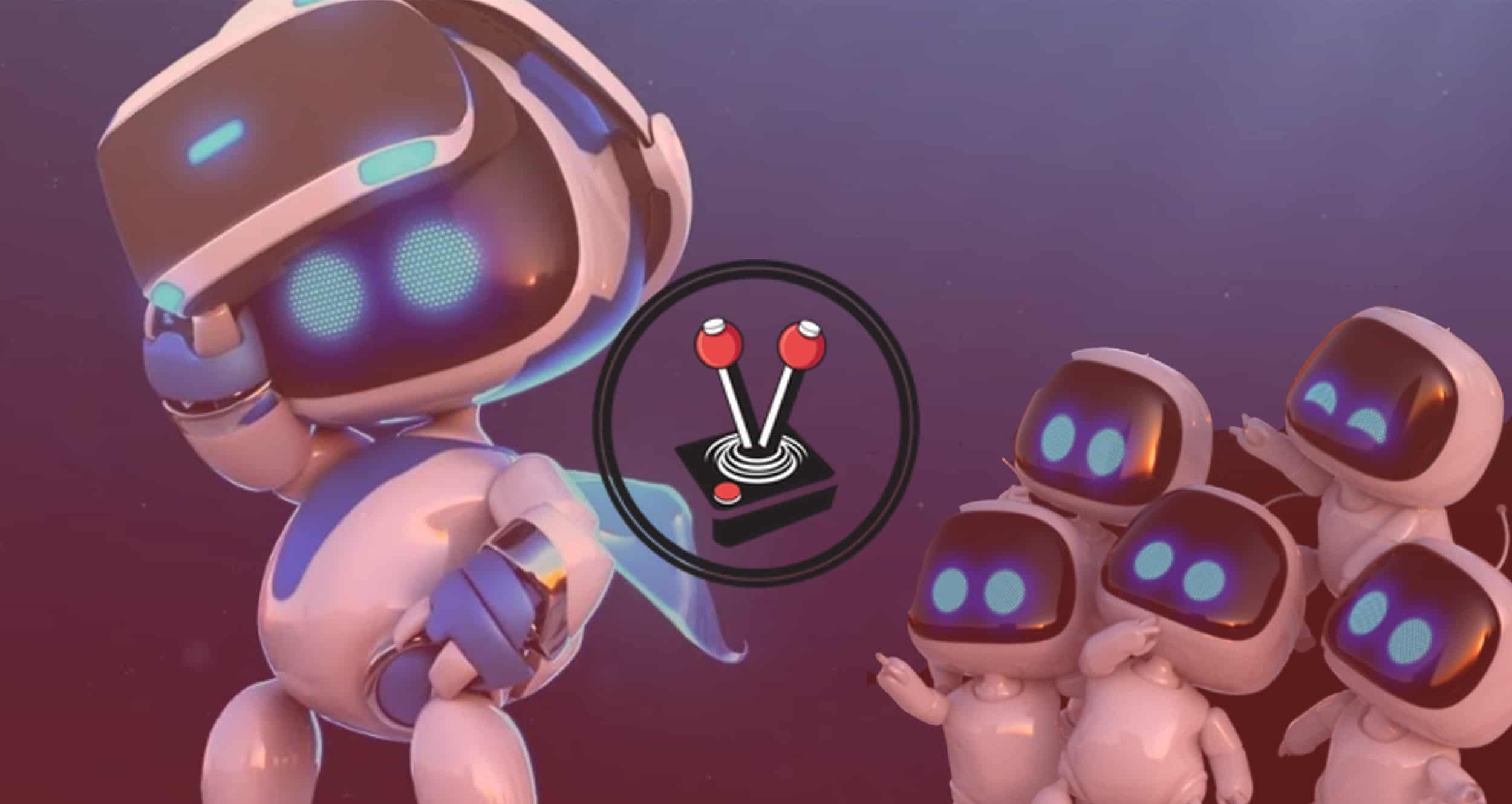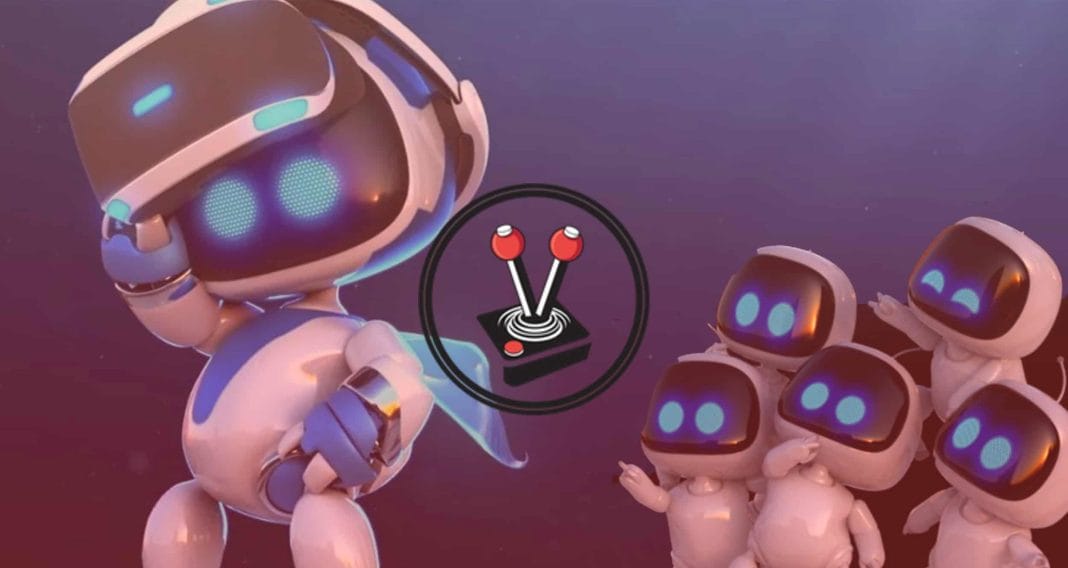When I received review code for the PlayStation Virtual Reality (PSVR) exclusive Astro Bot Rescue Mission, I had no idea what to think. My first reaction was “huh, they turned that cute robot PSVR demo into an actual game”? As such, I figured that the game would be nothing more than an enhanced or expanded upon play set of the original virtual reality (VR) tech demo.
With my curiosity piqued, I booted up the game and I slid on the PSVR unit. What followed was nothing short of stupendous! Astro Bot Rescue Mission, I am happy to say, is one of the best VR titles I have ever played.
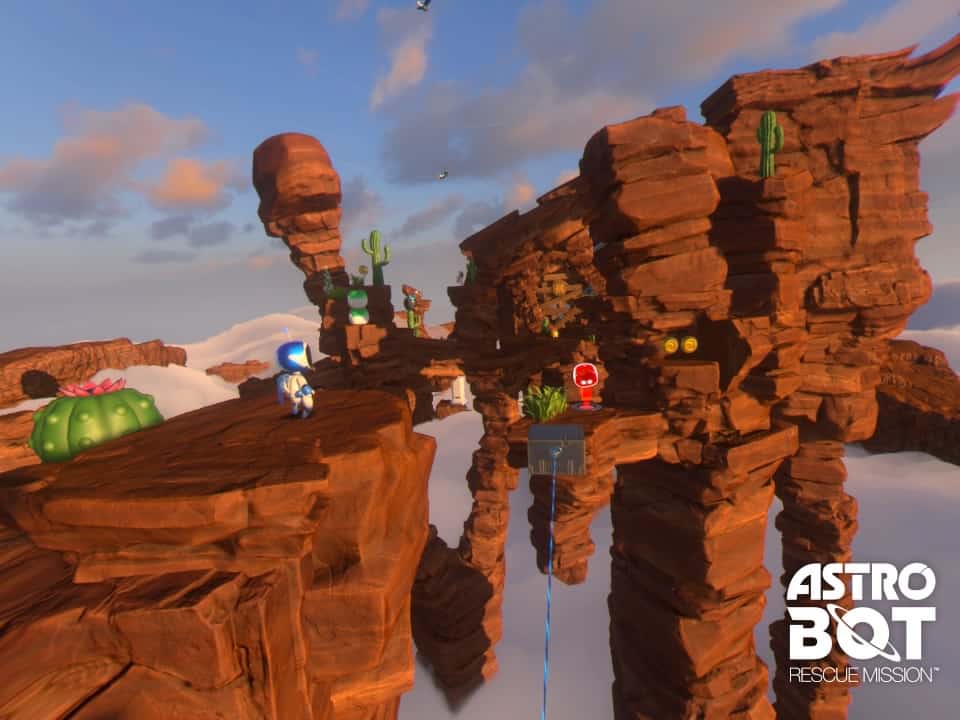
A Virtual Reality Spectacle [Story and Gameplay]
Astro Bot Rescue Mission is developed by Sony Interactive Entertainment’s Japan Studio. This is the same studio that helped to develop classics such as Ico, Shadow of the Colossus, Locoroco, Patapon and Knack, among many others. As such, they have a deep platforming heritage. In fact, Japan Studio crafted the ingenious Ape Escape back in 1999 – the first game developed to specifically take advantage of the PlayStation’s Dual Shock controller. In much the same way that Ape Escape was designed for the DualShock, Astro Bot Rescue Mission has been developed to embrace all that is possible with the PSVR. In so doing, Japan Studio has created one of the best and most accomplished titles for the platform.
As is typical with many platform oriented games, the narrative in Astro Bot Rescue Mission is not the focus of the title. Rather, it is second to the gameplay. With that said, the story begins when a seemingly evil alien decides to attack the Astro Bots’ sentient spaceship. The attack causes the ship to explode into five unique pieces. Each of which must be found if the Astro Bots ever have a hope of returning home. The story may be sparse in terms of narrative, but it is engaging enough to keep players interested through the five worlds that are on offer.
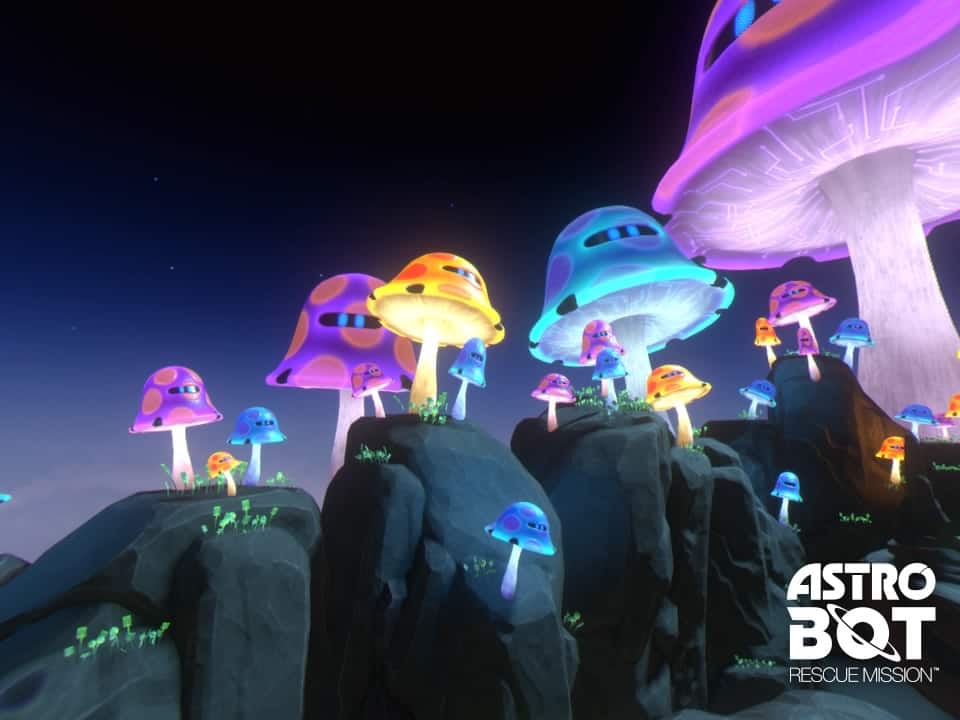
In terms of story, a highlight of VR games is that even when cutscenes play out, you have the ability to continue looking around a scene. In addition to that, cutscenes may be created in such a way so as to force a change in perspective. This is something that Astro Bot Rescue Mission does in a wonderful way, where the opening story shows the Astro Bots in the distance, before they zoom in and around you. The effect is subtle, yet engaging, and is an element that continues throughout the title’s gameplay.
At its core, Astro Bot Rescue Mission is still very much a platforming adventure title. As such, it features the traditional gameplay elements of carefully guiding a character around varying obstacles, solving puzzles and battling enemies to reach an eventual goal. Unlike other platformers, Astro Bot Rescue Mission has been made with VR in mind. Therefore, the experience literally puts players within the worlds of the game. With this in mind, players players take on the role of what appears to be a limbless and more advanced version of Pixar’s Wall-e. Your job is to then successfully guide Captain Astro through each level.
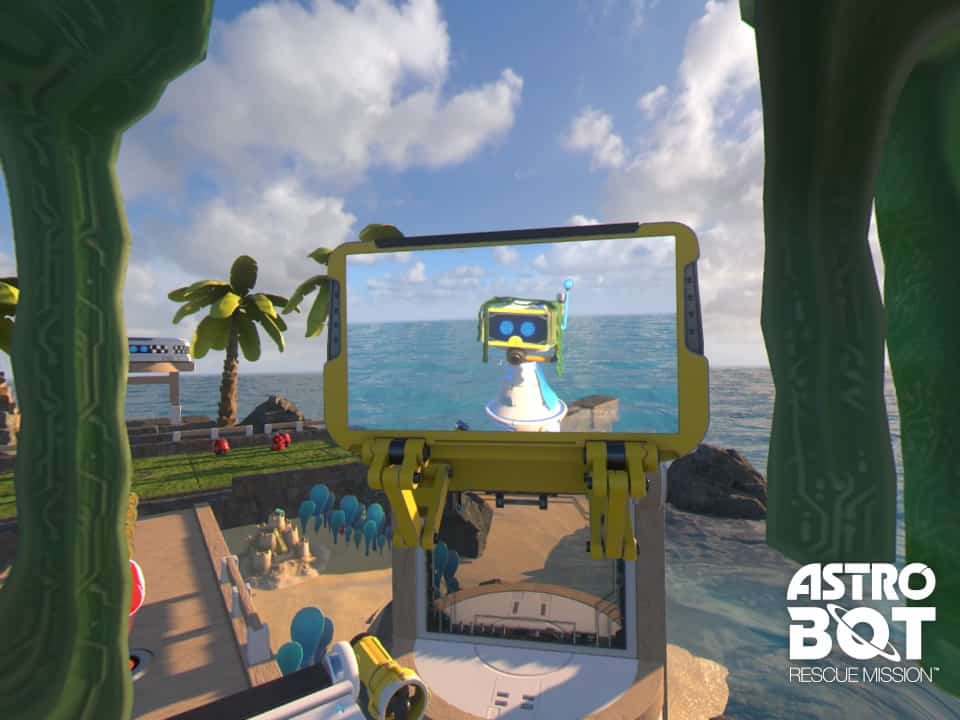
The unique dichotomy of being in the game world and also having control over the main protagonist is what sets Astro Bot Rescue Mission apart from every other game in its genre. It actually defines this title in the most extraordinary of ways. Having the ability to literally look around and interact with objects, by moving your body and head in the real world, is simply incredible. These changes in perspective are also at the forefront of the gameplay.
In the game, players have absolute control over Captain Astro, using the DualShock controller to guide him through levels. Controls are very responsive and although the difficulty in each level does increase, it never feels insurmountable. With that said, players cannot control their own directional movement. Although the ability to use the VR headset to look around the game world remains, it is not possible to physically move in any one direction using the controller. Rather, the game uses a form of linear movement to guide players along each stage. As long as Captain Astro moves forward, the player’s viewpoint will follow. At first, this can be a bit jarring, but over time it is a gameplay mechanic that is both enjoyable and also necessary for the game’s many puzzles and secrets. This is especially true when you realise that the player’s view can only move forward, and not backwards. Ensuring that every movement made is done with careful thought and precision.
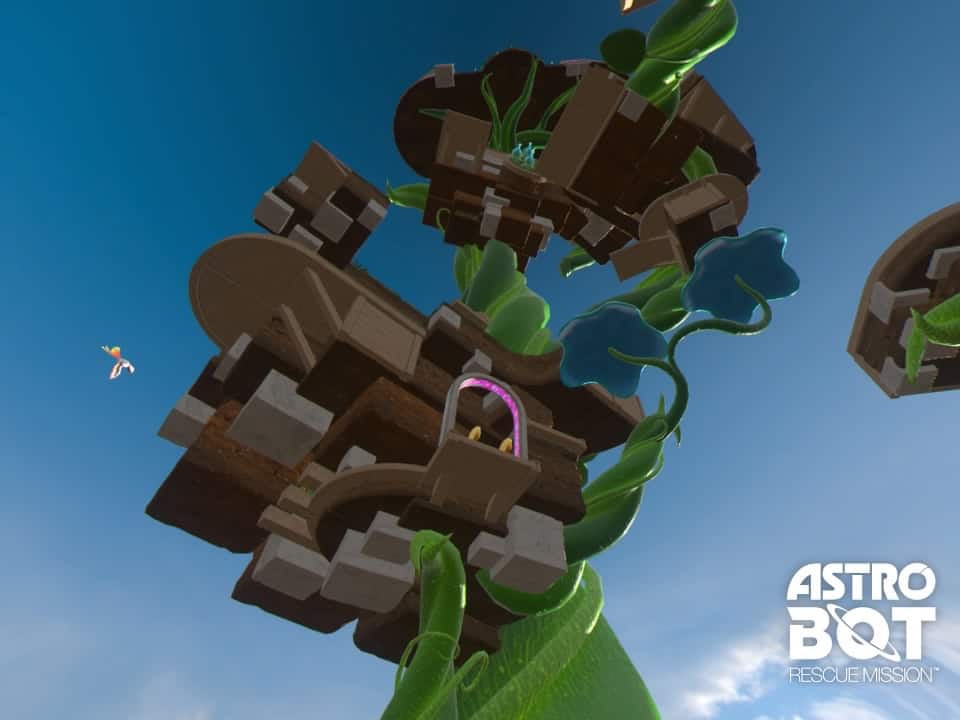
Careful movement becomes even more imperative when players realise that each level harbours eight of Captain Astro’s robot friends – all of whom are devilishly hidden – as well as one secret chameleon to find. Finding a chameleon in a stage gives players access to a unique time trial based on that particular level. These time trials can be incredibly tricky, and require precision reflexes and skill to master. Beating them, however, offers access to silver and gold Astro Bots. With that said, they do act as great reprieves from the main game.
In terms of finding the missing Astro Bots, the game employs an excellent use of 3-dimensional audio. Given how each of the missing bots call out to be found, it becomes fairly easy to pinpoint where in the virtual reality setting they may be. Finding them and navigating through the world, however, is where the challenge lies. Some will, quite literally, be off the beaten path (like off a cliff and hidden in fog) whilst others will be hidden away behind walls or trapped by enemies, requiring Captain Astro to set them free. Not being able to move backwards increases the challenge of finding each bot, and sometimes, even progressing through a level.
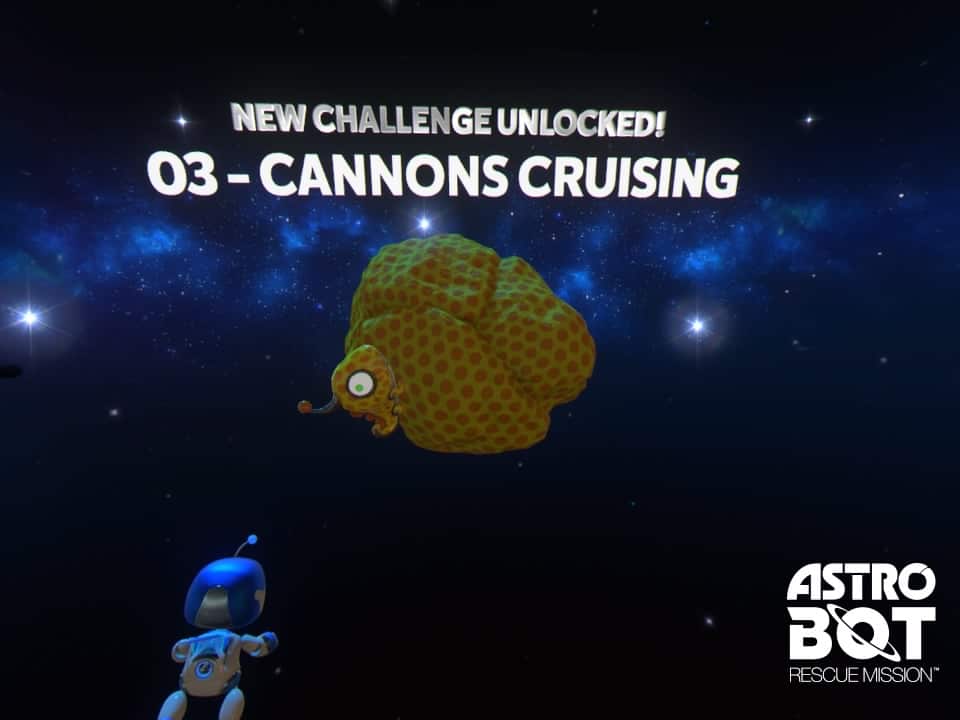
With the unique movement mechanics in mind, players must use a careful mix of strategy and puzzle solving to carefully navigate through each of the stages present in the five worlds of the game. It is this movement mechanic that allows for some truly incredible level design. By using changes in perspective, the game’s designers have crafted levels with paths that may lead directly overhead, below or around the player.
At some points, the way forward may seem impossible, until the player looks ‘around’ an obstacle. More often than not, players will also be required to physically turn around and inspect the game world behind them in order to progress or to solve a puzzle. These unique challenges force players to engage with the entirety of the world around them, and it is easily one of the best and most fun aspects of the game. Especially when you add gadgets.
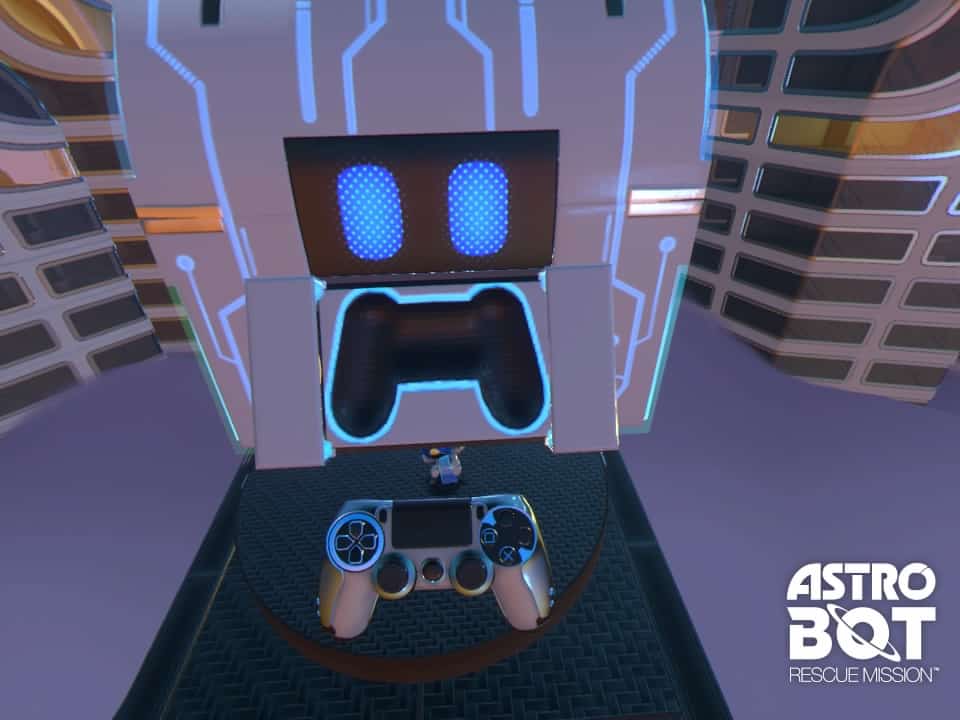
Navigating through levels is further enhanced by the power-ups that are bestowed upon the player’s floating golden controller. These include a tightrope, water shooter, ninja star dispenser, flashlight and others. These gadgets are used in a variety of ways within each level. Whether that is casting a tightrope and then flicking the controller upwards to launch Captain Astro to an unreachable spot; using the hosepipe to wash away goop or cause plants to grow by holding in the touchpad; through to flicking a finger on the touchpad to fire shooting stars at enemies or to create platforms for Captain Astro to traverse across a puzzle; there are a seemingly endless variety of use case scenarios that keep the gameplay fresh throughout all 20 levels.
When not using a gadget, players have access to Captain Astro’s abilities. Although basic in nature, they allow the little robot to easily navigate through the ingenious level design and to battle enemy units. Pressing Square allows Captain Astro to hit enemies, whereas holding it in gives access to a charged spinning attack. Pressing Cross makes Captain Astro jump, and pressing it again during a jump gives access to foot lasers – which serve as a ‘long jump’ and can also damage enemies. Speaking of enemies, they are fairly limited in design and scope; but the rhythm of combat is decent and inline with other platformers.
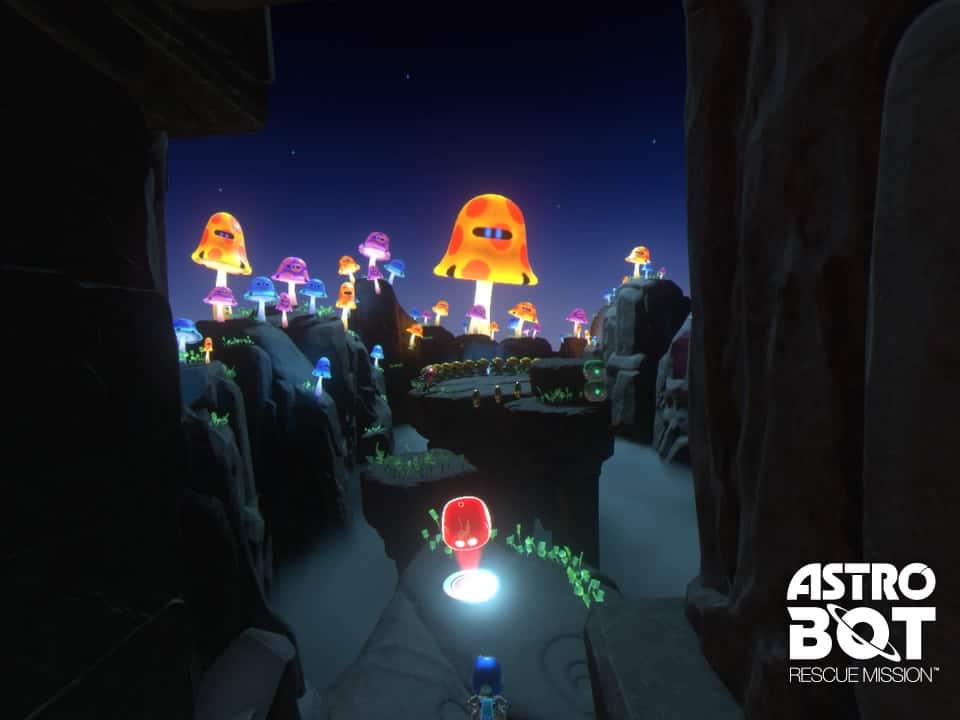
In addition to Captain Astro’s move set, another unique element of Astro Bot Rescue Mission is how it encourages physical movement from players. When not using the ‘virtual DualShock controller’ to control Captain Astro or to engage gadgets, the game will often prompt players to use their heads – literally. There are points in the game whereby enemy units will fly right up to a players line of sight, or a path will be blocked, and the only way through is to offer a physical head-butt. Then there are other moments whereby players must dodge, duck and dive away from projectiles, or shake off goop that has gotten stuck to the players visor. These are all novel movements that add to the charm of the game, and were never too obtrusive, distracting or uncomfortable to carry out.
As with any good platformer, there are a variety of bosses to battle and conquer. Each of the five worlds in the game has a singular boss that must be defeated in order to gain a missing piece of the broken spaceship. Accessing these boss levels, however, requires a certain number of Astro Bots – the very same ones that are hidden throughout each level in the game. Once enough have been found, a boss can be unlocked. From a Donkey-Kong like Gorilla who needs his teeth pulled with the tightrope, or a lava loving Octopus whose mouth needs to be filled with water, through to a corset wearing spider whose webs need to be cut with shooting stars, and more; the bosses in the game are true VR spectacles. Although their patterns of movement can be guessed fairly quickly, it will take dexterity and skill to beat later end game bosses.
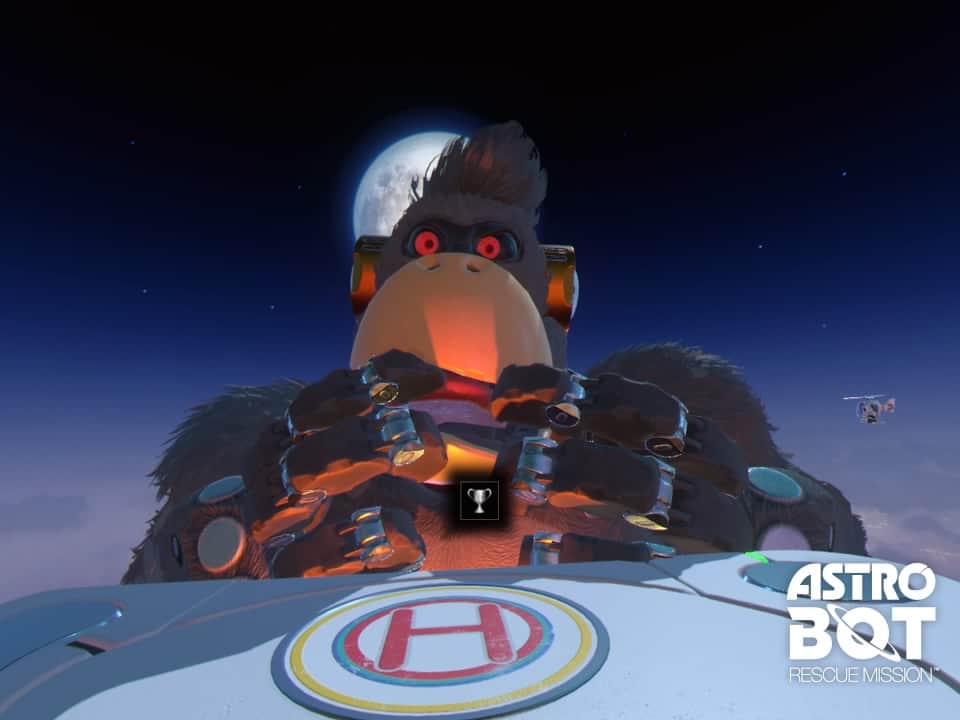
When not fighting bosses and enemies or searching for Astro Bots and chameleons, Astro Bot Rescue Mission also offers a unique ‘Playroom’ like area in the Astro Bot ship. Here players can mess about with Captain Astro, bumping into all of the Astro Bots that have been found, as well as slipping and sliding around the playroom.
When not messing about, players also have access to a ‘crane’ arcade machine. Here they can spend collected coins and use Captain Astro to ‘pick’ collectibles baubles. Each bauble has a unique diorama in it that corresponds to a particular collectible set. All of which looks gorgeous in VR.
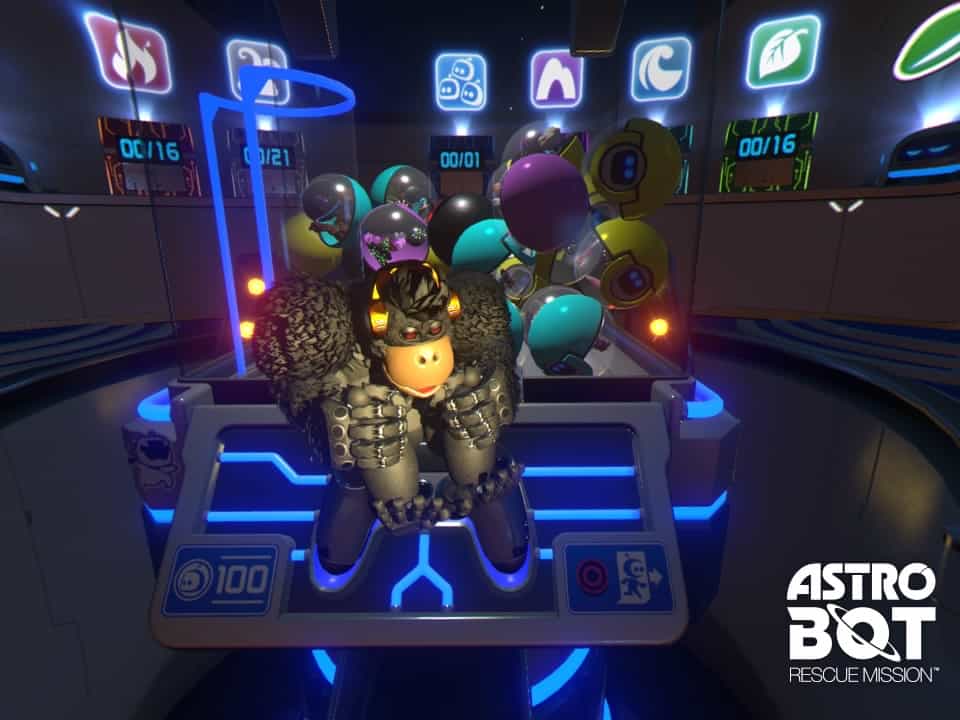
Pixar-like quality and charm [Performance and Visuals]
Astro Bot Rescue Mission is an absolutely gorgeous game. For the most part, it feels like a Pixar film. Animations are smooth and crisp, and the visual effects on offer are simply outstanding. Although a simple platformer, the game features luscious use of particle effects, physics and reflective surfaces. The water effects, in particular, were quite impressive and rather unexpected.
There are also a lot of small little embellishments, throughout the title, that really give the game a level of charm and detail not often seen in platformers. Captain Astro, for instance, is packed to the brim with personality – even though he is not able to speak. When not moving around the various stages, he will look directly at the player and beckon that the game be continued. He may also see something interesting in the distance, and will audibly let you know with beeps and boops. Then there are times when he will accidentally get stuck to the player’s visor. When that happens, it is very difficult to not to smile and be entranced by his adorable personality.
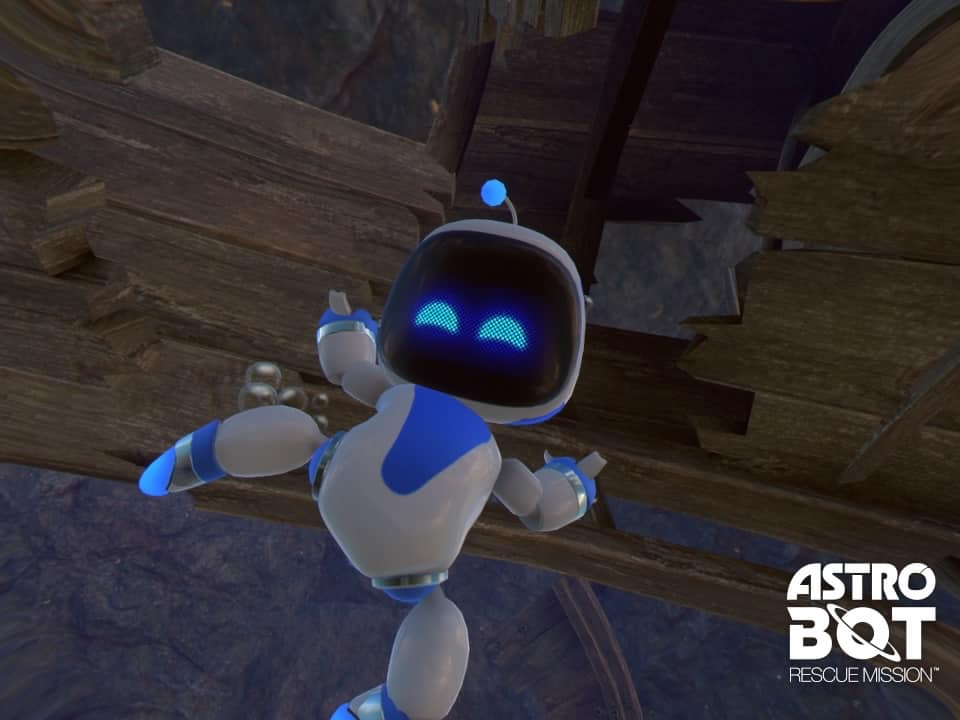
No matter where you look in the incredibly varied worlds on offer, there is always something wonderful to be seen. Whether that might be fauna that glow and sparkle when touched, to robotic dolphins that guide you below the surface, through to cows crazing upon mountain tops, or a fast paced stint on rails through a volcano; the game never ceases to surprise with awe and wonder. Then there are moments where the player’s visor will crack or be covered by goop from enemy attacks, or perhaps there will be seaweed from underwater travels or cobwebs stuck to the sides from a cave; there are so many little details that really add a wonderful level of immersion to the game. The level of polish is also second to none. Not just for a platformer, but as a VR title as well.
Although the visuals may be pretty, it is clear that they are not taxing. As such, the game runs flawlessly, with fast loading times and a constant framerate.
A PSVR Classic is born [Conclusion]
Astro Bot Rescue Mission offers a level of interactivity and polish that has not yet been seen on the PSVR platform. It is quite clear that the game was built specifically for VR, and in so doing was obviously a labour of love for Japan Studio. Quite simply, the game offers the best implementation of PSVR yet seen on the platform. It features solid and refined gameplay and crisp Pixar-like visuals; all of which are bundled together in a title with so much charm, character and charisma, that it would be a travesty not to experience. Without a doubt, the game is a true PSVR classic.
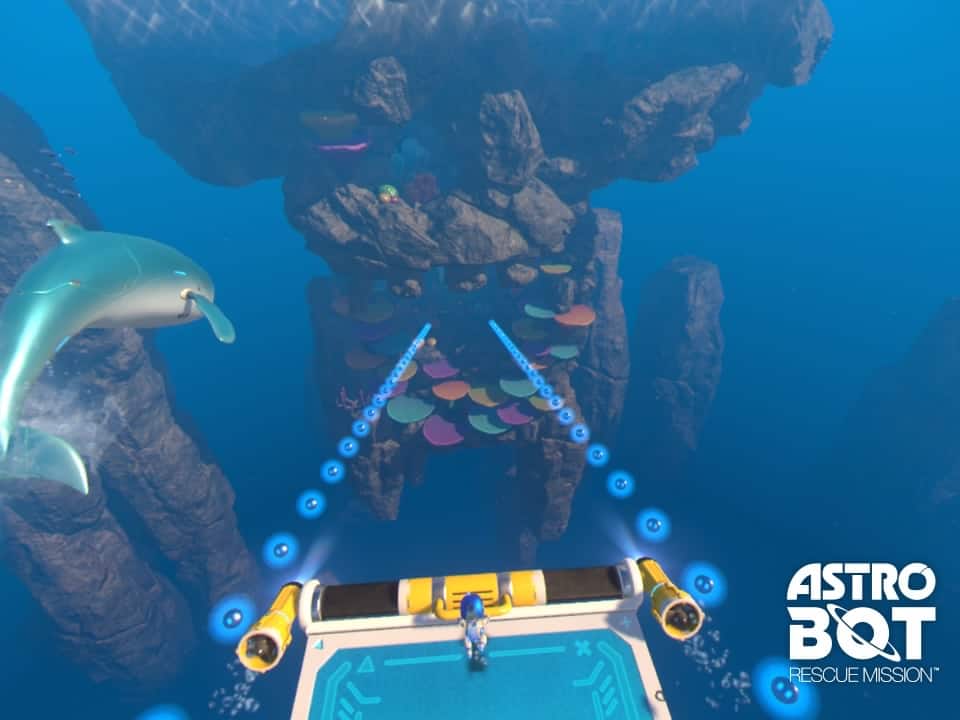
| Hours Played | 5+ Hours |
| Difficulty | Normal |
| Platform | PlayStation 4 |
| Acquisition | Review copy courtesy of PlayStation South Africa |
Owner, founder and editor-in-chief at Vamers, Hans has a vested interest in geek culture and the interactive entertainment industry. With a Masters degree in Communications and Ludology, he is well read and versed in matters relating to video games and communication media, among many other topics of interest.

